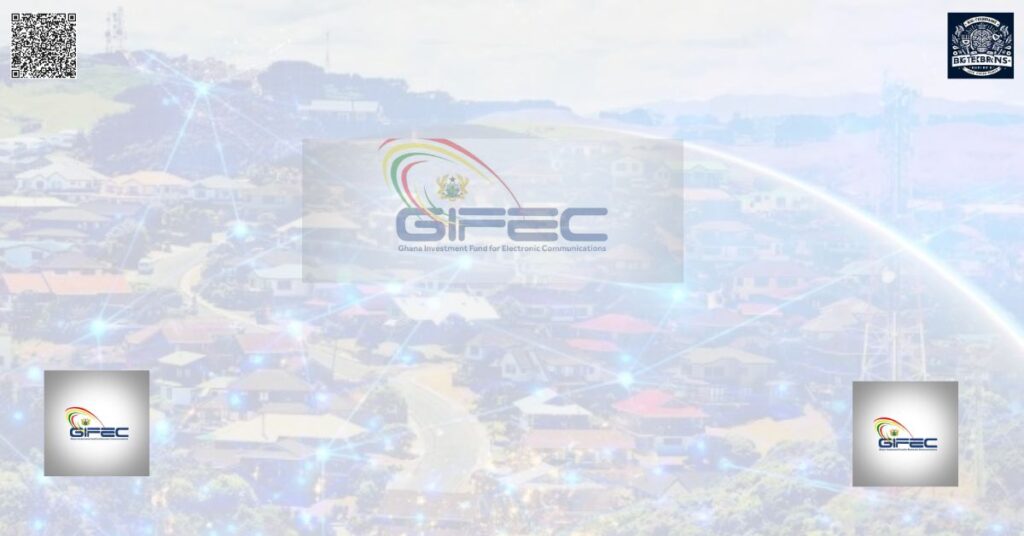Excerpt
The Ghana Investment Fund for Electronic Communications (GIFEC) is a pivotal agency under Ghana’s Ministry of Communications and Digitalisation, dedicated to bridging the digital divide by ensuring universal access to electronic communications across the nation.
Historical Background
Established in January 2004 as the Ghana Investment Fund for Telecommunications (GIFTEL), GIFEC’s initial mission was to facilitate universal access to basic telephony services in underserved and unserved communities. The enactment of the Electronic Communications Act, 2008 (Act 775) expanded and redefined its mandate, leading to its rebranding as GIFEC.
Constitutional Mandate
Under Act 775, GIFEC is tasked with:
- Facilitating universal access to electronic communications.
- Providing internet points of presence in underserved and unserved areas.
- Implementing capacity-building programs to promote ICT inclusion.
- Deploying ICT equipment to educational, vocational, and training institutions.
Organizational Structure
GIFEC operates under a Board of Trustees comprising representatives from:
- Ministry of Communications and Digitalisation.
- Parliamentary Select Committee on Communications.
- National Communications Authority (NCA).
- Four members from the Industry Forum.
- The Administrator of GIFEC.
Leadership and Appointment
The Board of Trustees is chaired by the Minister for Communications and Digitalisation. The Administrator (CEO) of GIFEC is appointed by the President of Ghana. As of May 2024, Mrs. Eva Andoh-Poku serves as the acting Administrator, following the tenure of Mr. Prince Ofosu Sefah from August 2021 to May 2024.
Collaborations
GIFEC collaborates with various governmental and non-governmental organizations to fulfill its mandate, including the National Communications Authority and the Ministry of Communications and Digitalisation.
Achievements
GIFEC has made significant strides in enhancing digital inclusion:
Rural Telephony Project:
- Between 2017 and 2019, 413 rural sites were deployed using innovative solutions like the Rural Star UMTS 900, developed in partnership with Huawei Technologies.
Cyberlabs Programme:
- Established 90 Cyberlabs, focusing on the Girls in ICT initiative, and conducted e-assessments in 120 schools.
Capacity Building:
- Trained over 17,000 individuals since 2021, with plans to train an additional 3,000, emphasizing digital literacy and inclusion.
Future Outlook
Looking ahead, GIFEC aims to:
- Complete the construction and activation of all 2,016 sites under the Ghana Rural Telephony and Digital Inclusion Project.
- Train an additional 5,000 individuals, focusing on initiatives like Girls in ICT.
- Implement the Ghana Digital Acceleration Programme, including setting up 200 Cyberlabs and renovating 50 Community ICT Centres.
References
- https://moc.gov.gh/gifec/
- https://en.wikipedia.org/wiki/Ghana_Investment_Fund_for_Electronic_Communications
- https://www.asaaseradio.com/eva-andoh-poku-appointed-acting-administrator-of-gifec1/
- https://gna.org.gh/2023/02/gifecs-commendation-at-pac-shows-communications-and-digitalisation-ministers-excellent-leadership/
- https://www.ghanaweb.com/GhanaHomePage/business/The-ambitious-plans-of-GIFEC-for-2024-as-it-aims-at-bridging-the-digital-divide-and-empowering-communities-1905497
- https://www.graphic.com.gh/news/general-news/gifec-board-of-trustees-inaugurated.html
- https://www.ghana.gov.gh/mdas/6be12c6076/
- https://nca.org.gh/wp-content/uploads/2021/11/NCA-Meets-GIFEC-and-Ugandan-Delegation.pdf
- https://nca.org.gh/wp-content/uploads/2024/01/5-year-Strategic-Plan-2024-2028-Abridged.pdf

